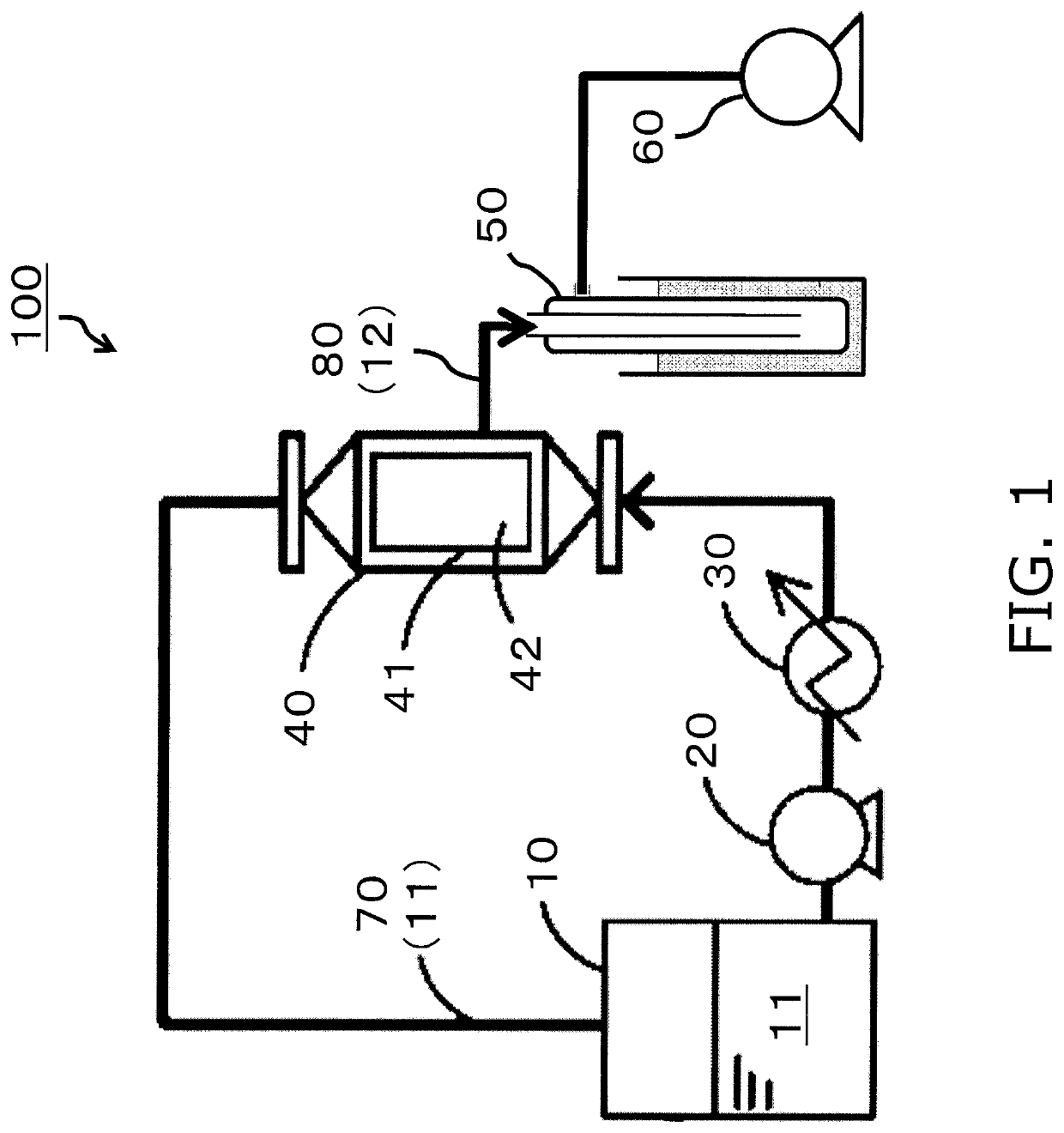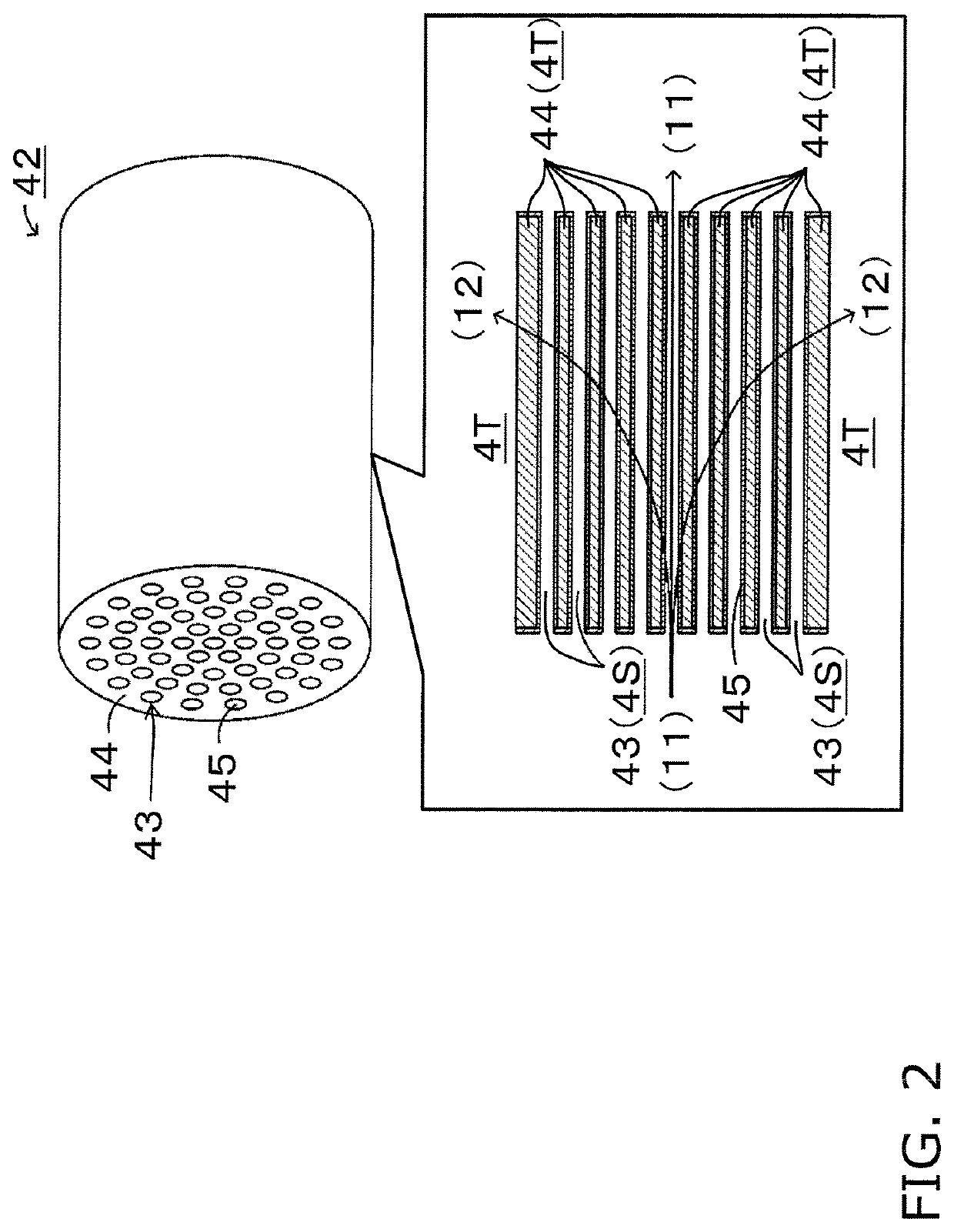Dehydration method, dehydration apparatus, and membrane structure
a dehydration apparatus and membrane technology, applied in the direction of membranes, distillation, crystalline aluminosilicate zeolites, etc., can solve the problems of dehydration performance degradation, insufficient separation performance, and inferior heat resistance and chemical resistance of organic membranes, so as to suppress the degradation of dehydration performance
- Summary
- Abstract
- Description
- Claims
- Application Information
AI Technical Summary
Benefits of technology
Problems solved by technology
Method used
Image
Examples
example 1
[0086]1. Production of Porous Support
[0087]A monolith-shaped compact having a plurality of through holes was formed with use of a green body containing an alumina raw material and an extrusion molding method, and then was fired.
[0088]Then, a porous layer including alumina as a main component was formed on surfaces of through holes of the fired compact, and the resulting compact was fired again to form a porous support. A surface of a portion of the porous support on which a membrane was to be formed had an average pore size of 65 to 110 nm.
[0089]2. Production of Seed Crystals
[0090]A starting material solution having a composition of 23 SiO2:1 Al2O3:10 Na2O:2.8 SDA:450 H2O was prepared by dissolving and dispersing, in pure water, colloidal silica, a Y type zeolite (HSZ-320NAA, manufactured by Tosoh Corporation), sodium hydroxide, and 1,4-diazabicyclo[2.2.2]-octane-C4-diquat dibromide, which is a structure-directing agent (SDA).
[0091]Then, the starting material solution was introduced...
example 2
[0116]1. Production of Porous Support
[0117]A porous support was produced in the same process as that of Example 1.
[0118]2. Production of Seed Crystals
[0119]DDR crystals were synthesized through hydrothermal synthesis (160° C., 16 hours) according to a method disclosed in WO 2010 / 90049, and the synthesized DDR crystals were sufficiently washed. The DDR crystals had an average particle size of 190 nm. DDR crystals having low crystallinity were produced by crushing the obtained DDR crystals using a bead mill for 90 minutes.
[0120]A starting material solution having a composition of 2.5 SDA:0.75 SiO2:1 Al2O3:1.25 P2O5:50 H2O was prepared by dissolving, in pure water, colloidal silica, aluminum isopropoxide, 85% phosphoric acid, and N,N,N′,N′-tetramethyldiaminohexane, which is a structure-directing agent (SDA).
[0121]Then, a small amount of DDR crystals was added to the starting material solution and the resulting mixture was introduced into a pressure vessel, and then hydrothermal synthes...
PUM
| Property | Measurement | Unit |
|---|---|---|
| Ra | aaaaa | aaaaa |
| velocity | aaaaa | aaaaa |
| velocity | aaaaa | aaaaa |
Abstract
Description
Claims
Application Information
 Login to View More
Login to View More - R&D
- Intellectual Property
- Life Sciences
- Materials
- Tech Scout
- Unparalleled Data Quality
- Higher Quality Content
- 60% Fewer Hallucinations
Browse by: Latest US Patents, China's latest patents, Technical Efficacy Thesaurus, Application Domain, Technology Topic, Popular Technical Reports.
© 2025 PatSnap. All rights reserved.Legal|Privacy policy|Modern Slavery Act Transparency Statement|Sitemap|About US| Contact US: help@patsnap.com


